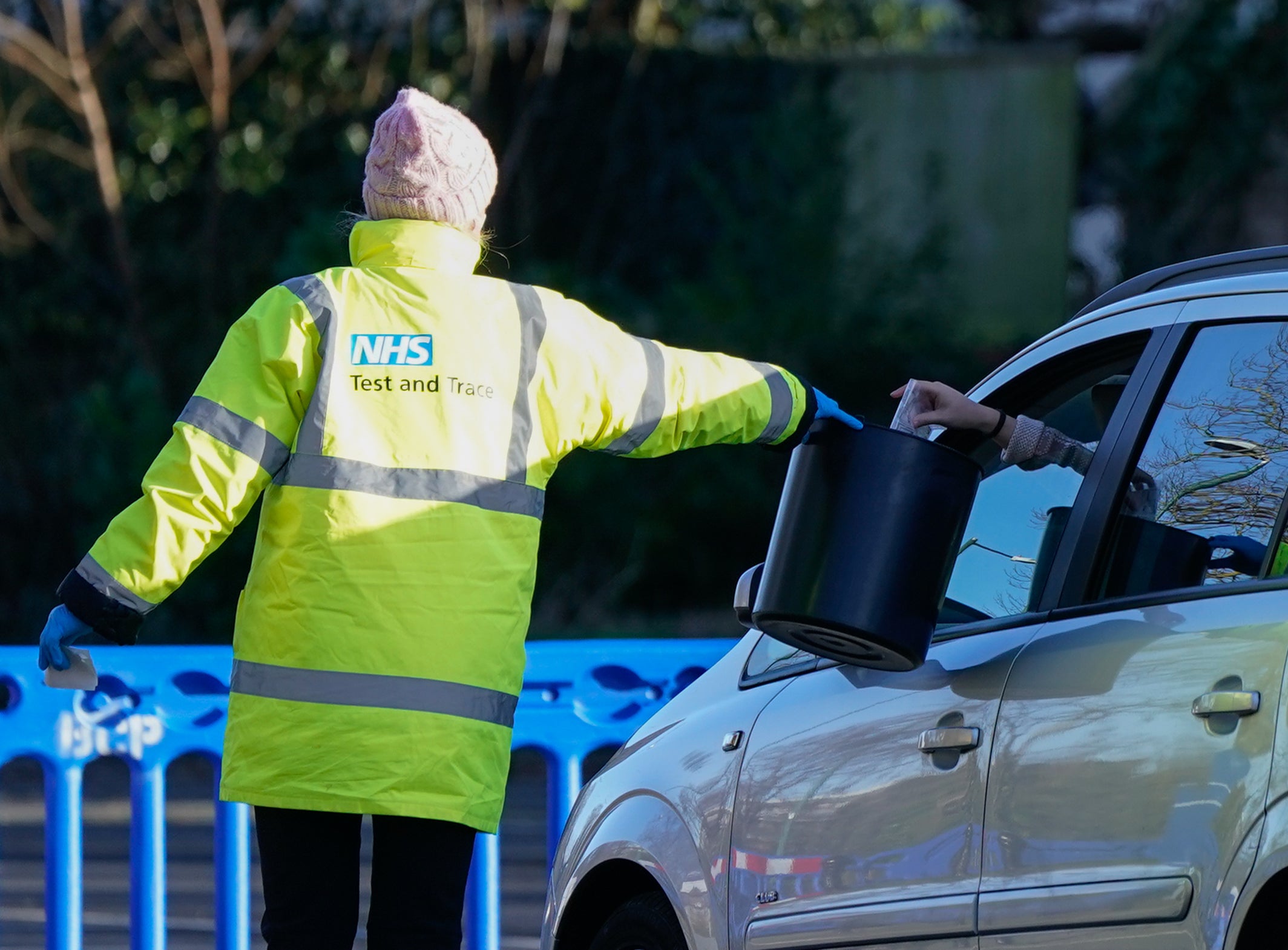Gap widens between official Covid-19 figures and ‘true’ number of cases
Hundreds of thousands of people with Covid-19 are being missed from the figures each week.

Your support helps us to tell the story
From reproductive rights to climate change to Big Tech, The Independent is on the ground when the story is developing. Whether it's investigating the financials of Elon Musk's pro-Trump PAC or producing our latest documentary, 'The A Word', which shines a light on the American women fighting for reproductive rights, we know how important it is to parse out the facts from the messaging.
At such a critical moment in US history, we need reporters on the ground. Your donation allows us to keep sending journalists to speak to both sides of the story.
The Independent is trusted by Americans across the entire political spectrum. And unlike many other quality news outlets, we choose not to lock Americans out of our reporting and analysis with paywalls. We believe quality journalism should be available to everyone, paid for by those who can afford it.
Your support makes all the difference.The gap between the UK’s official Covid-19 figures and the likely true number of cases in the country is getting wider, new analysis shows.
An average of 99,900 cases of coronavirus per day were recorded from January 23-29, according to the Government’s Covid-19 dashboard.
But the true total was likely to be three-and-a-half times this figure, at 357,200 a day, according to estimates published on Friday by the Office for National Statistics (ONS).
The estimate for the week ending January 22 was nearly three times the dashboard average, while at the start of January it was around twice the number.
It means an increasing number of people with Covid-19 are being missed from the official count, despite the recent decision to start including reinfections.
The growing difference between the two totals reflects the limitations of the Government figures, which count only those people who have reported themselves as having tested positive for the virus.
This means the dashboard numbers are affected by how many people are taking tests and how many are choosing to report the results.
They also miss many people who have coronavirus but have not taken a test because they do not have any symptoms.
By contrast, the ONS figures are based on nose and throat swabs taken from a representative sample of tens of thousands of people in private households.
The same people are sampled every week, regardless of whether they know they have Covid-19 or have reported a positive result.
In doing this, the ONS is able to produce estimates of the true number of cases of coronavirus across the country.
The figures are published as part of the ONS weekly infection survey – the most reliable measure of both the prevalence and volume of Covid-19 in the UK.
The future of the survey could be among the decisions announced next week as part of the Government’s “living with Covid” plan.
Prime Minister Boris Johnson is expected to outline a number of changes to Covid-19 testing and surveillance.
A poll this week by the NHS Confederation of more than 300 health leaders in England found that 83% did not want the weekly ONS infection survey to be dropped or scaled back.
Professor Dame Helen Stokes-Lampard, chairwoman of the Academy of Medical Royal Colleges, said: “We need the ONS survey of cases to continue, so that we have accurate data on which to base future decisions.”
Analysis by the PA news agency of the latest ONS data shows that around 1.8 million Covid-19 cases are likely to have been missed from the official dashboard count for the week to January 29.
This is up from an estimated 1.2 million cases missed from the dashboard in the previous week.
At the peak of the recent Omicron wave of the virus, in the week ending January 1, nearly half a million people in the UK are likely to have been infected with Covid-19 every day – far higher than the 189,800 a day in the Government figures.